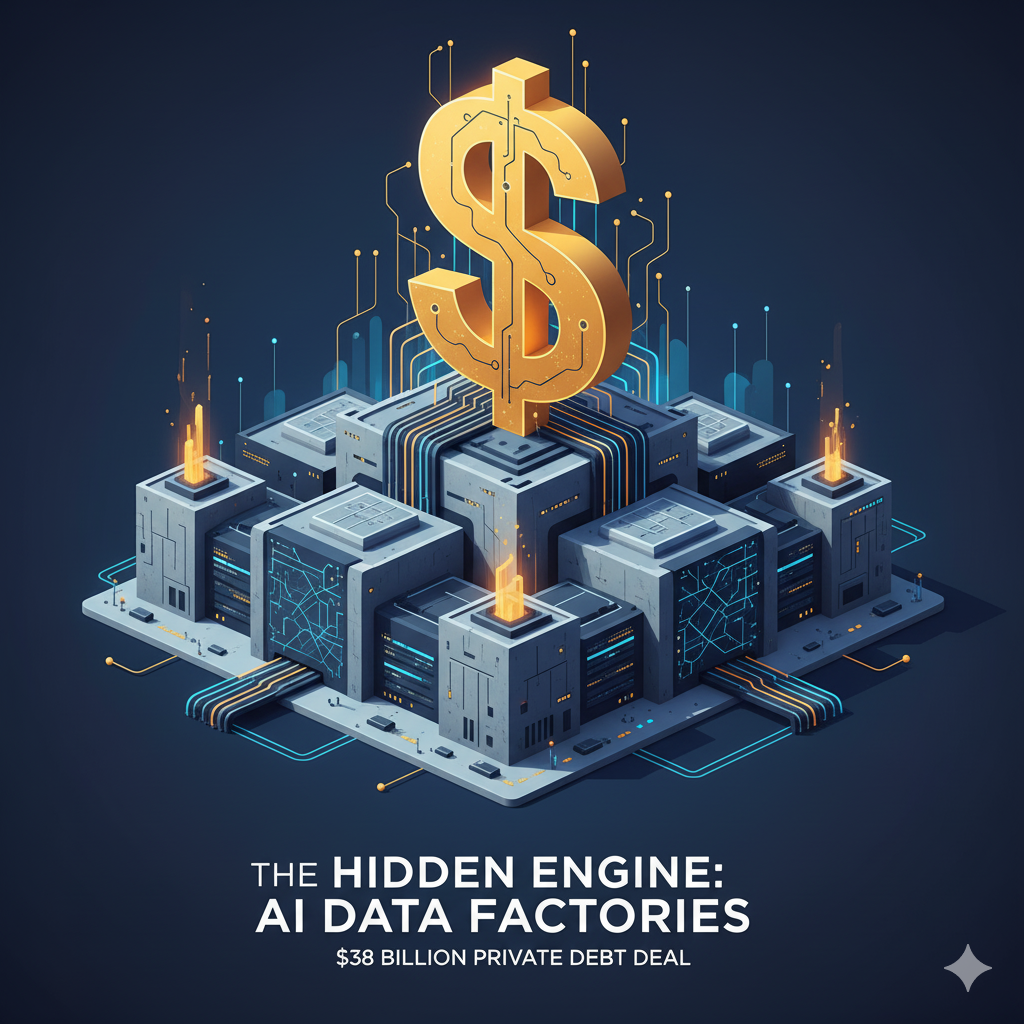We see the headlines about artificial intelligence every day. We interact with new AI tools, apps, and services. But behind this digital revolution, a physical and financial one is taking place on a scale that is hard to comprehend.
The AI boom isn't just being built with code; it's being built with concrete, steel, and record-breaking amounts of money.
Recently, news of a staggering $38 billion financial deal began to circulate. This isn't venture capital for a new app. This is one of the largest private debt deals in history, and it's all to fund the "factories" where AI is born: data centers.
This single deal shines a light on the hidden engine of the AI revolution—a new world of massive-scale finance.

Table of Contents
- 1. A New Kind of Price Tag: The $38 Billion Deal
- 2. How It Works: The "Private Credit" Revolution
- 3. What Is This Money Actually Building?
- 4. The Critical Link: Solving the Power Problem
- 5. Conclusion: AI is a Revolution in Infrastructure
## 1. A New Kind of Price Tag: The $38 Billion Deal
To understand how significant this is, we have to talk about the number. A $38 billion deal is massive. It's larger than the entire economy of some countries.
This isn't money from a traditional bank loan. It's coming from a different, and rapidly growing, part of the financial world: private credit.
This tells us that the AI industry has entered a new phase. It's moving from a focus on software development to a focus on massive capital expenditure (CapEx).
Building the infrastructure for high-level AI is now on the same financial scale as building entire national power grids or railway systems.
## 2. How It Works: The "Private Credit" Revolution
So, where does $38 billion come from, if not a giant bank? It comes from private investment funds. This deal is structured as a private "asset-backed securitization" (ABS).
That sounds complicated, but the idea is simple:
- The "Asset": The "asset" is the secure, predictable stream of cash flow that the new data centers will generate.
- The "Securitization": The loan is "backed" (or secured) by these future payments. Investors are essentially buying a piece of that future income.
Here’s how the money flows:
- A specialized developer builds the data centers.
- A major cloud provider (a tech giant) signs a long-term lease to use these data centers.
- This cloud provider, in turn, has a massive contract to supply computing power to a world-leading AI research lab.
This creates a secure chain of payments. The AI lab pays the cloud giant, the cloud giant pays the data center lease, and the lease payments pay back the $38 billion loan. For investors, it's considered a very safe, stable, long-term bet.
## 3. What Is This Money Actually Building?
This money is building the next generation of AI data centers. These are not the data centers of ten years ago.
These are sprawling, high-performance computing (HPC) campuses designed specifically for the extreme demands of training and running large language models (LLMs).
The $38 billion is designated for a portfolio of these sites, which will be leased to one of the biggest names in cloud computing. This is a clear signal that the demand for AI compute is so enormous that even the tech giants need new, creative financing models to build out capacity fast enough.
## 4. The Critical Link: Solving the Power Problem
A key detail in this entire story is power. You can't just plug these AI data centers into the local electrical grid. They consume a staggering amount of energy, and that demand must be reliable, 24/7.
Many of these new data centers are being built with their own "behind-the-meter" power generation.
This means the developer is also building on-site power plants (often using efficient natural gas) that directly service the data center.
This strategy is critical for two reasons:
- Reliability: It ensures the data center has uninterrupted power, which is essential for massive AI training jobs that can run for weeks.
- Grid Stability: It prevents these new "power-hungry" facilities from draining the public grid and causing instability or blackouts for the surrounding community.
## 5. Conclusion: AI is a Revolution in Infrastructure
The rise of AI is not just a technological story; it's a story of finance and infrastructure.
This record-breaking $38 billion deal is a symptom of a larger trend. The AI industry is maturing into a new global utility.
To build this future, new financial models are being invented, and new solutions for energy are being deployed. The digital world, it turns out, rests on a foundation of massive, real-world capital and power.



